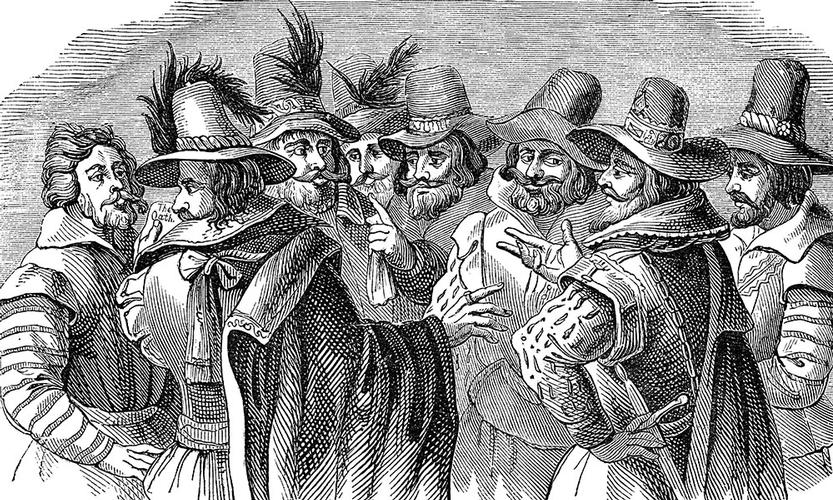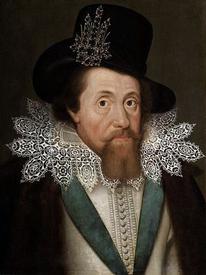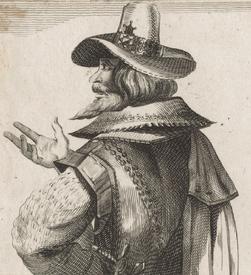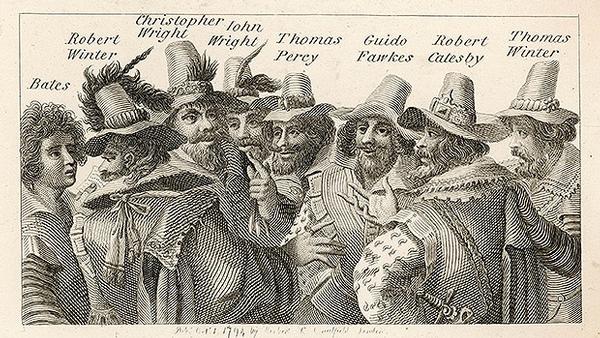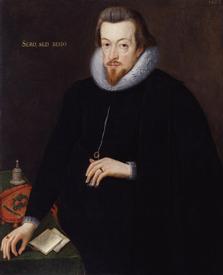On the evening of Monday, 4th November 1605, a handsome man with reddish brown hair walked into a house in Westminster. He was anonymous as he took refuge from the autumn weather, but by the end of the night he would be brought before the King as one of the most notorious, if ultimately unsuccessful, terrorists in British history. His name was Guy Fawkes, and he was part of a group whose mission had been to assassinate the King, his heir, and the entire English political establishment with one huge, gunpowder fuelled explosion from beneath the Houses of Parliament.
To this day, Britain marks the 5th November with fireworks and Fawkes effigies, but as modern Brits revel in the celebrations they may not realise just how close the plotters had come to succeeding in their grim deed.
Background
Since Henry VIII had broken with Rome in 1534, England had endured bitter Guy Fawkes religious conflict between Protestants and Catholics. After Mary I briefly restored Catholicism in the 1550s, her half-sister Elizabeth I succeeded her and re-established the Protestant state. The rest of the 16th century was a dangerous time to be a Catholic in England. Although Elizabeth herself was religiously tolerant - far more tolerant than 'bloody' Mary had been - she still enacted laws which made it a fineable offence to practise Catholic mass and expelled Catholic priests from the country on pain of death. This death sentence could also be extended to anyone caught hiding a Priest in their home.
Anti-Catholic sentiment was rife among the wider Protestant majority, and only intensified by the
numerous Catholic plots against Elizabeth which culminated in the execution of Mary, Queen of
Scots in 1587, the defeat of the Spanish Armada in 1588, and a failed coup led by the Earl of Essex in
1601.
Despite this legal and societal discrimination, by the dawn of the 17th century around a third of the
English population remained loyal to the old faith. With Elizabeth in her old age (by the standards of
the time), these Catholics were hopeful that a new monarch would usher in an era of tolerance
towards their religion.
James I ascends to the throne
In the early hours of 24th March 1603, Elizabeth died at Richmond Palace. With no children of her
own, her chosen successor was the son of Mary, Queen of Scots, the woman she had ordered
executed 16 years previously. He was James VI of Scotland, who was accordingly invited to become
James I of England.
James, though a Protestant himself, was known to have a degree of sympathy for Catholicism (after all, his mother was a Catholic) and while travelling from Edinburgh to London in April 1603 he met with the brother of England's most notorious Catholic priest, John Gerrard.
This meeting sent ripples of excitement through the Catholic underworld, which hoped this was a sign of the favour the new King would extend to them.
However, these hopes were dashed in the first year of James' reign in England.
The new King had a peculiar attitude towards Catholics; he was happy to associate with Catholic individuals - indeed, it is widely rumoured that his wife,Anne of Denmark, was a secret Catholic – and had at least two Catholics in his Privy Council at the start of his reign, but he was intensely suspicious of the faith
as a whole and routinely referred to its followers as 'devils'.
While he personally did not have huge appetite to pursue legal punishments for Catholics, he consented to discriminatory laws passed by a viciously anti-Catholic Parliament, and was therefore a disappointment to the many English Catholics who had hoped to be left alone.
In reality, the fines and punishments which had been sanctioned by Parliament were rarely enforced on average English Catholics. However, this was not good enough for a militant group who had become disillusioned with the religious status quo and gathered to take radical action.
The Plotters
Robert Catesby could have easily led a comfortable life as a gentleman in the English midlands. Born
in Warwickshire in 1572, he grew into a tall, charismatic man who was described as affable and generous, and was popular among Catholics and Protestants alike
The only surviving son of Sir William Catesby, who had spent years in prison in the 1580s for his harbouring of the Catholic Priest
Edmund Campion, Catesby was from a devoutly Catholic family but
in 1593 had married a Protestant, Catherine Leigh, with whom he
had a son. It may seem odd that a man from such a prominent
Catholic family married a Protestant woman, but the marriage
offered Catesby a shield from the Elizabethan anti-Catholic laws.
Catesby seemed content with this milder version of his faith, but
became hardened when his wife died in 1598. He started moving in more militant circles and was involved in the failed Essex rebellion against Elizabeth in 1601. He was fined and forced to sell his estate for his part in the plot, further embittering him.
After becoming disillusioned with the new King, Catesby began gathering like-minded Catholics around him, including his cousin Thomas Winter, a Yorkshire gentleman named John Wright, and Wright’s brother in law, Thomas Percy. It was Winter who put Catesby in touch with an explosives expert who had spent the previous
decade fighting for the Spanish armies in Europe – Guy Fawkes.
As with Catesby, Fawkes’ path to religious extremism had started with a heart-breaking loss. He had in fact been born a Protestant in April 1570, but tragedy struck the family with the death of his father, when Guy was only 8. His mother then married a Catholic, and it was this step-father who drilled a devout and militant Catholicism into the distraught and impressionable young Guy, desperate for a father figure.
On a spring evening, 20th May 1604, the group gathered at the back of the Duck and Drake pub on the Strand in London, a short walk from Westminster Palace. It was at this meeting that Catesby detailed his plan to blow the palace up at the next meeting of Parliament, and the group swore an oath to secrecy. Over the next year more men would be involved in the plot and in the end, the conspirators numbered 12 - including a certain Francis Tresham, whose role in this story was to become crucial.
The Plan
The plan was audacious, and involved more than just the assassination of the King and Parliament.
Fawkes was to light the explosives, and immediately escape by boat to a house owned by Catesby
across the River Thames in Lambeth. From there, he was to travel to the continent and inform the
Catholic powers in Europe of what had transpired in England.
Simultaneously, the plotters were to organise a large hunt in the midlands for the morning after the explosion and invite members of the Catholic gentry. Rather than go hunting, however, they would announce the plot to the hunting party and immediately head to kidnap the King’s 8-year-old daughter, Elizabeth, and his toddler son Charles. Elizabeth, backed by a Catholic army from the midlands, would be placed on the throne and
Fawkes would return with yet more military support from Europe.
The plotters assumed that, in a state of fear and confusion, any interim government which had been put together in London would succumb to their demands.
On 24th May 1604, a house adjoining the House of Lords was hired in Percy’s name. The group intended to dig their way to the cellars underneath the Parliament building and load their gunpowder there. Due to fears over an outbreak of plague, the gathering of Parliament was postponed until February 1605, and so the plotters did not start digging until December. After Parliament was again delayed until October 1605, the group went their separate ways until a cellar under the House of Lords became available.
The lease was immediately acquired by Percy and by the middle of the summer 36 barrels of gunpowder had been placed under the palace, concealed by firewood. All that remained was for Parliament to gather, and Fawkes to light the fuse.
The Plot is discovered
The gathering of Parliament was delayed by a further month, but was finally going ahead on the 4th
November. As the day drew close, one imagines that the plot became more real in the minds of the
conspirators and some of them began to think more seriously about the human cost of their plan.
Indeed, most of these well-connected men had family and friends who were due to attend the opening of Parliament, and some among them expressed a desire to warn those who they were close to. Responding to these misgivings, Catesby explicitly forbade any of the group to give even a hint of the plot to anyone outside of the 12. But there was one plotter who did not listen to Catesby’s order – his cousin, Francis Tresham.
If the opening of Parliament had gone ahead on any of the days it had initially been scheduled to, Tresham would never have even known about the plot. The son of an eccentric Northamptonshire Catholic gentleman, Tresham had previously been involved in the Essex rebellion but was not informed of the 1605 plan because, as an eccentric character himself, he was not believed to be trustworthy.
It was only after the death of his father in October that Tresham was brought in as the 12th member of the group, as he stood to inherit his father’s considerable wealth. Catesby believed that the risk of informing Tresham was outweighed by the financial aid he could bring to the plot, but within a fortnight was no doubt wishing he had stuck to his earlier assessment of him. In a further twist of irony, Catesby was unaware that Tresham had debts so large that he was considerably less well-off than he had hoped, even with his inheritance money.
On being informed of the plot, the usually hot-headed Tresham was nervous, and appalled at the
potential loss of life. After trying to convince the plotters not to go ahead with the plan, he penned
an anonymous letter to his brother-in-law, Lord Monteagle, who was due to attend the opening of
Parliament. The mysterious letter begged Monteagle to ‘devise some excuse to shift your
attendance from this Parliament’ and ‘retire yourself to your country where you may expect the
event in safety’. Without going into detail about the plan, Tresham predicted that the Parliament
would ‘receive a terrible blow…and yet they shall not see who hurts them’.
On the evening of 26th October 1605, the King’s Secretary of State, Robert Cecil, and some other ministers were sitting down for supper in Whitehall, near Westminster, when Monteagle burst into the room with the letter.
Cecil was immediately alarmed but too cunning to order a panicked
search for proof of the conspiracy. The head of England’s unofficial
but extensive spy network, Cecil was experienced in detecting plots
and plotting himself.
Indeed, it was he who had uncovered the Essex plot in 1601, and it was he who had engineered James’ascension to the English throne as Queen Elizabeth lay on her deathbed. Despite his hunched back and diminutive appearance, he was equally feared and respected as a shrewd political operator who had eyes everywhere. However, he had not known about this plot.
The next day, as Cecil bided his time with Tresham’s letter, Thomas Winter was informed of the night’s events by Monteagle’s servant, Thomas Ward. Word was Robert Cecil out. The secret plot had been exposed.
Losing his nerve, Winter begged Catesby to abandon the plan, but after Fawkes inspected the barrels of gunpowder and found them unmolested, Catesby gambled that Cecil would not see much of a threat in the letter and not inform the King. It was a gamble that would not pay off. On the 4th November, as evening approached, Cecil struck. He showed the letter to King James, ordered an extensive search of Westminster and convinced the King to secretly call off the gathering of Parliament.
The search was led by the Lord Chancellor Thomas Howard, accompanied by Lord Monteagle, and as they observed a suspicious amount of firewood in one of the cellars a handsome man with reddish brown hair walked through the door. Asked who the cellar belonged to, Fawkes answered that it was being rented by Thomas Percy. The name immediately aroused suspicion, and after they reported their findings to Cecil and the King they were ordered to search the cellars again.
It was the early morning of 5th November, 1605, when Guy Fawkes was caught red handed, with 36 barrels of gunpowder and a fuse, and duly arrested. Dragged before the King, he was asked what his intention had been, and is said to have replied that he intended to blow him back to Scotland. In any case, the plot had failed, and now the hunt was on for the rest of the conspirators.
Aftermath
Guy Fawkes was taken immediately to the Tower of London, where he held out under horrendous
torture until the 9th November before he gave up the names of any of his co-conspirators. Unfortunately for him, Cecil’s spy network had kicked into gear in the meantime and rounded them up by the 8th November anyway.
With the plot discovered, the group (except Tresham) fled London in different routes and gathered
in Warwickshire, as originally planned. Having not yet lost all hope, Catesby rode to meet the
hunting party he had organised with other Catholic gentry on the morning of 6th November.
He told them about the failed plot, but assured them that the King and Cecil were dead, and declared his
intention to kidnap the Princess Elizabeth and start a rebellion. The Catholics who had gathered were horrified and fled for their homes immediately, wanting no part of the plot and fearful that they may be targeted for their connection to Catesby. Realising that his cause was lost, Catesby returned to the other plotters and on the morning of the 7th November they made a lonely journey in the driving rain further north to Holbeche House in Staffordshire. It was here they would make their final stand.
On the morning of the 8th November, an explosion was set off in the house by some of their remaining gunpowder. These being superstitious men from a very superstitious era, they saw this as a sign from God that he was displeased with them, sapping their morale as it dawned on them that their mission had not been divinely sanctioned or justified.
At around 11am, the Sheriff of Worcester arrived with his men, intent on capturing the plotters dead or alive. A gunfight followed, in which Robert Catesby, Thomas Percy and John Wright were killed. Thomas Winter and Ambrose Rokewood were injured and arrested with the other survivors; Wright’s brother Christopher, Winter’s brother Robert, Thomas Bates, Everard Digby and Robert Keyes. They joined Guy Fawkes in the Tower, and
Thomas Winter proceeded to give a full and detailed confession to the authorities.
There was no doubt that they were guilty of treason, and there was only one punishment for traitors
in early 17th Century England: to be hung drawn and quartered. This gruesome punishment involved
the condemned person being hung until nearly dead, then taken down to have their torsos sliced
open and their entrails ripped out of them, before their bodies were cut into four pieces and their
head placed on a spike in a public place to serve as a warning to others. The men all met this end on
the 30th and 31st January 1606 – all except Guy Fawkes, who cheated his grisly fate by throwing
himself off the ladder he was climbing to the hanging platform, breaking his neck and dying
instantly. Francis Tresham had died of natural causes whilst imprisoned in December 1605.
Legacy
One may assume that the King and his government sought retribution against the Catholic
population for the Gunpowder Plot, but this is not entirely accurate. To be sure, anti-Catholic
sentiment was intensified but this did not translate into further legal punishments. Indeed, in a
speech given to Parliament just days after the discovery of the plot, James stressed that not all
Catholics were responsible for the actions of a few radicals, and he remained convinced that most
English Catholics were loyal to him – James was always a ruler who prized political loyalty over
religious loyalty. Even Robert Cecil avoided the pursuit of reactionary anti-Catholic legislation,
perhaps because he feared it would jeopardise the fragile peace with Spain which had been signed in
1604.
To this day, the plot is remembered every 5th November in Britain with the lighting of fireworks and
effigies of Guy Fawkes. British schoolchildren are taught about the plot, but are not exposed to the
human side of the story – the change of Catesby and Fawkes’ life trajectories after their tragic losses,
the cunning of the King’s hunch backed Secretary, the nerves of the search party and Fawkes as they
encountered each other in the cellar, and the long, lonely journey in the pouring rain made by the
desperate plotters after their plan had failed.
Remember, remember, the 5th of November, as the rhyme goes, but remember also the real people involved in this fascinating story.

